Abstract
Recent field experiments on the relative performance of dieldrin and dieldrin/resin wettable powders on sorptive mud surface have not confirmed the promising results obtained with the latter products in earlier laboratory tests. In view of this a renewed investigation into the possible factors governing the performance of such products was considered desirable, and further laboratory and field experiments were carried out in co-operation with the Colonial Pesticides Research Unit at Arusha, Tanganyika.
The results of these experiments have given a better understanding of the factors involved, and a coherent interpretation of the differences in performance shown by various products under different conditions. The main factors to be taken into account appear to be: mobility of the insects during exposure, as influenced by insect species and exposure conditions; inherent toxicity of the dieldrin/resin particles; and the average relative humidity inside the experimental huts.
The sorption phenomenon can be demonstrated in the field, but in view of the humidity conditions it does not seem likely that it will interfere seriously with practical mosquito control. A potential critical condition might be prevalent only in areas where the presence of sorptive mud is coupled with long periods of low humidity inside the huts, but further experimental data are necessary to confirm this.
Full text
PDF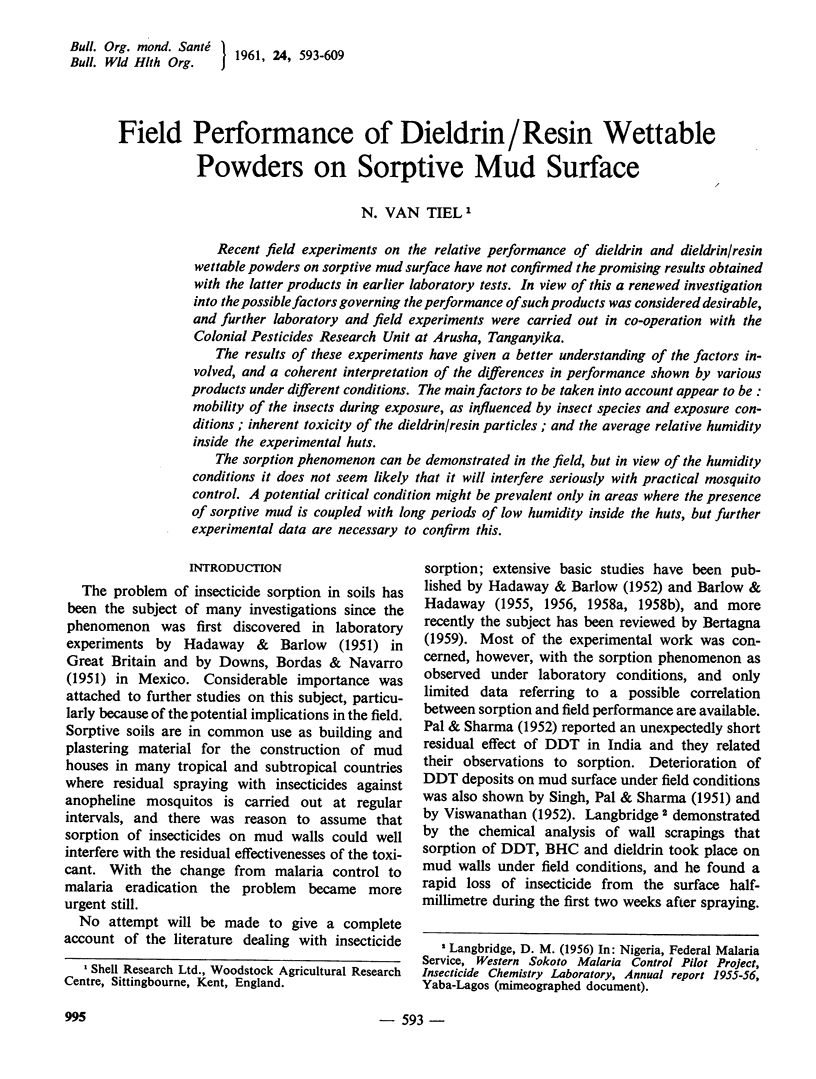
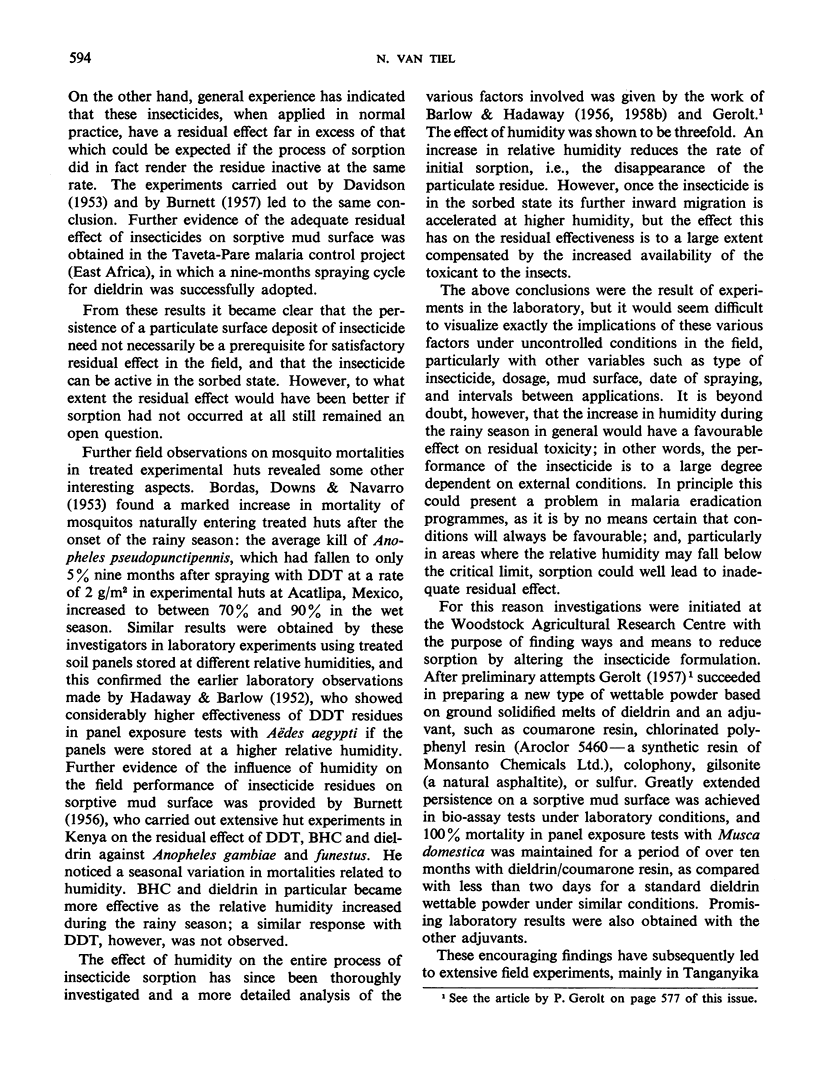

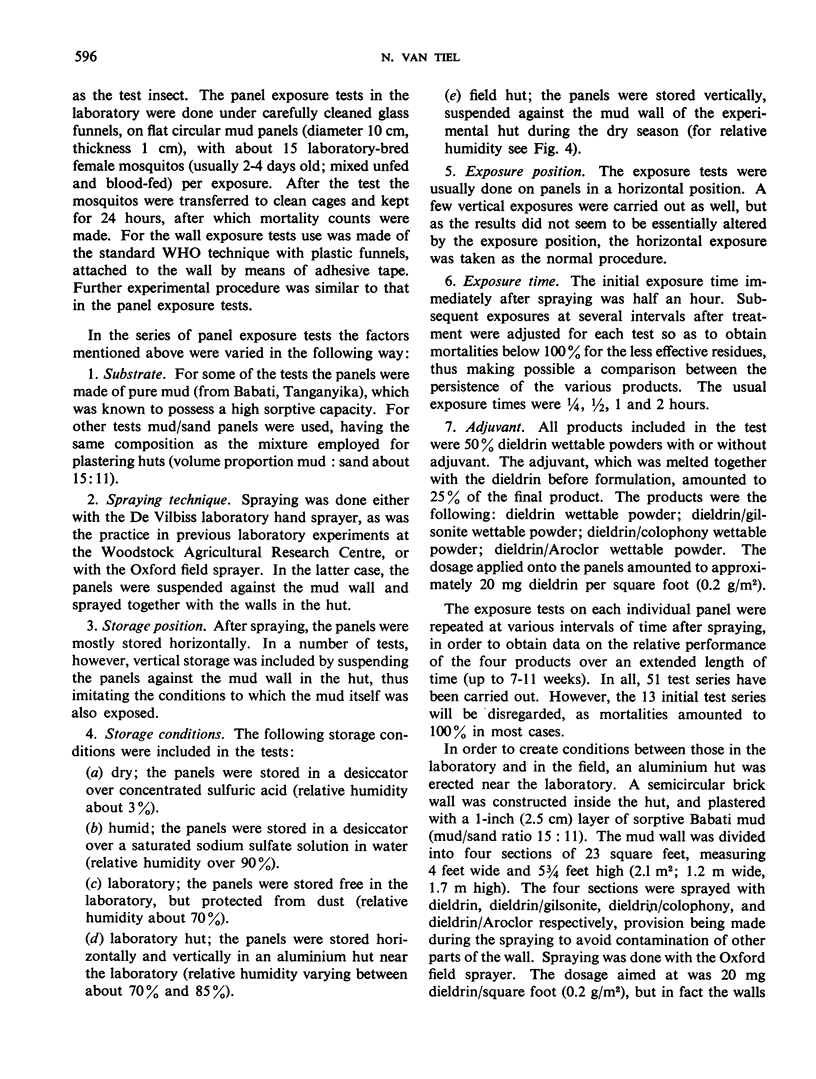
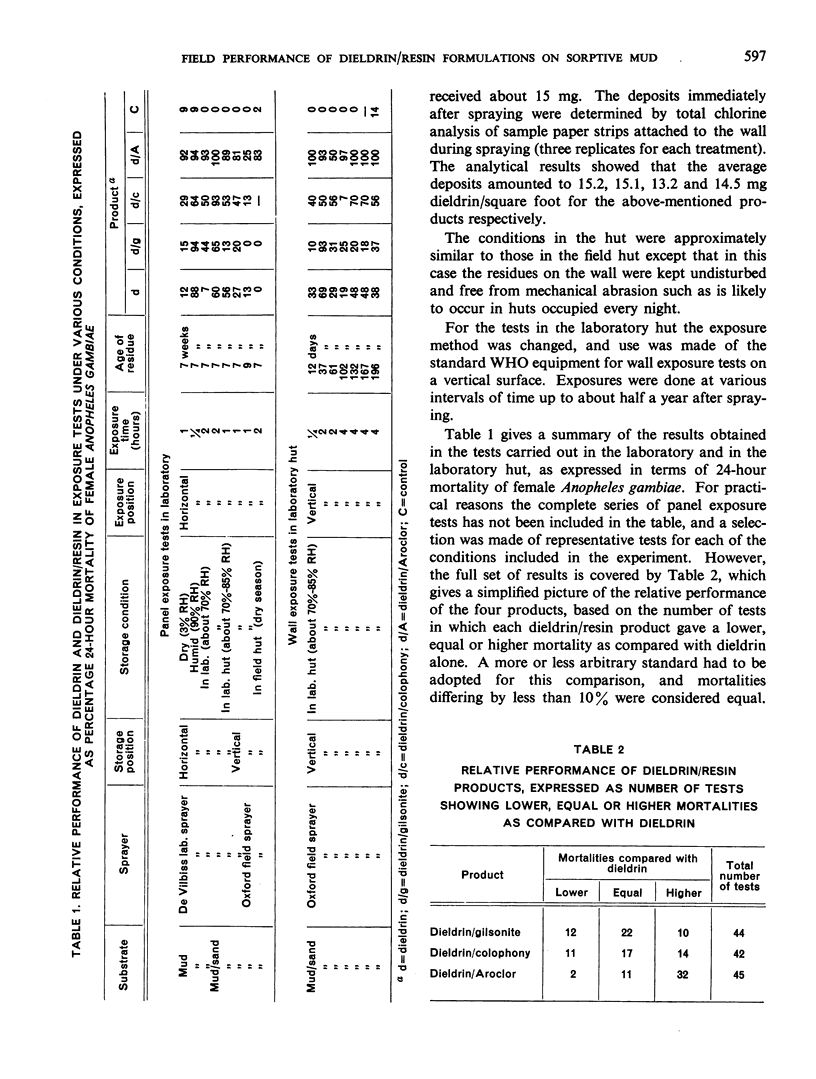

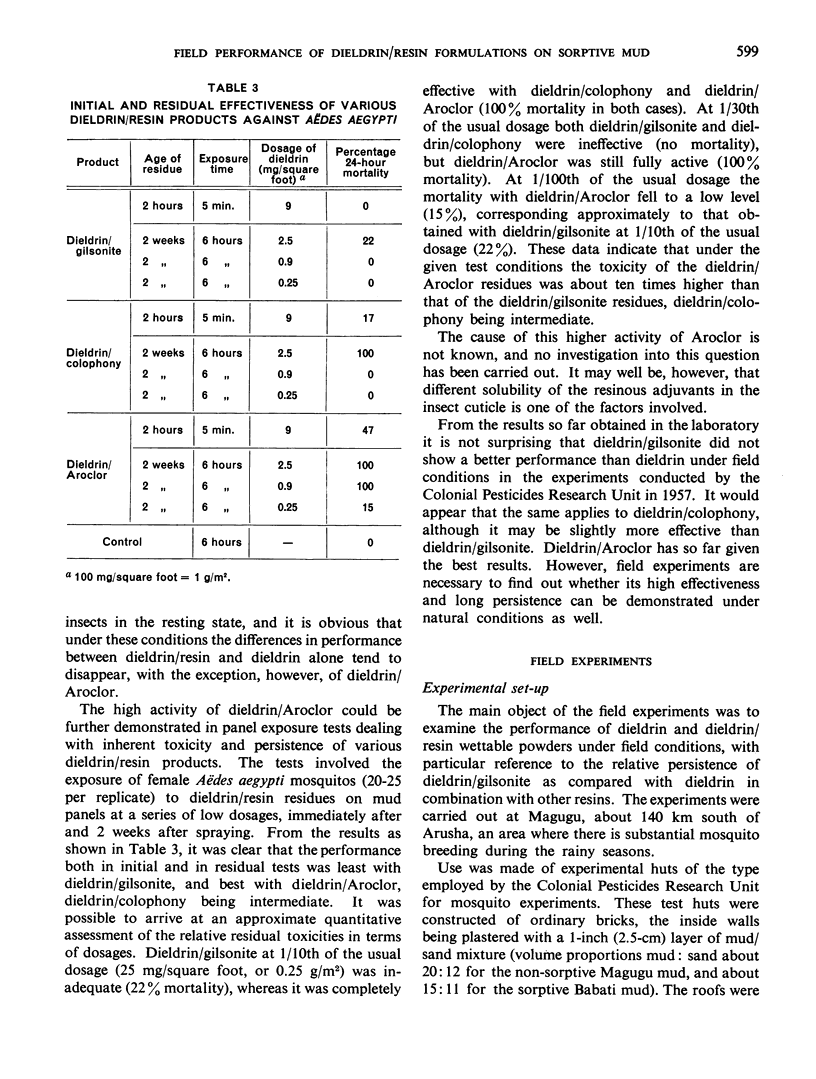
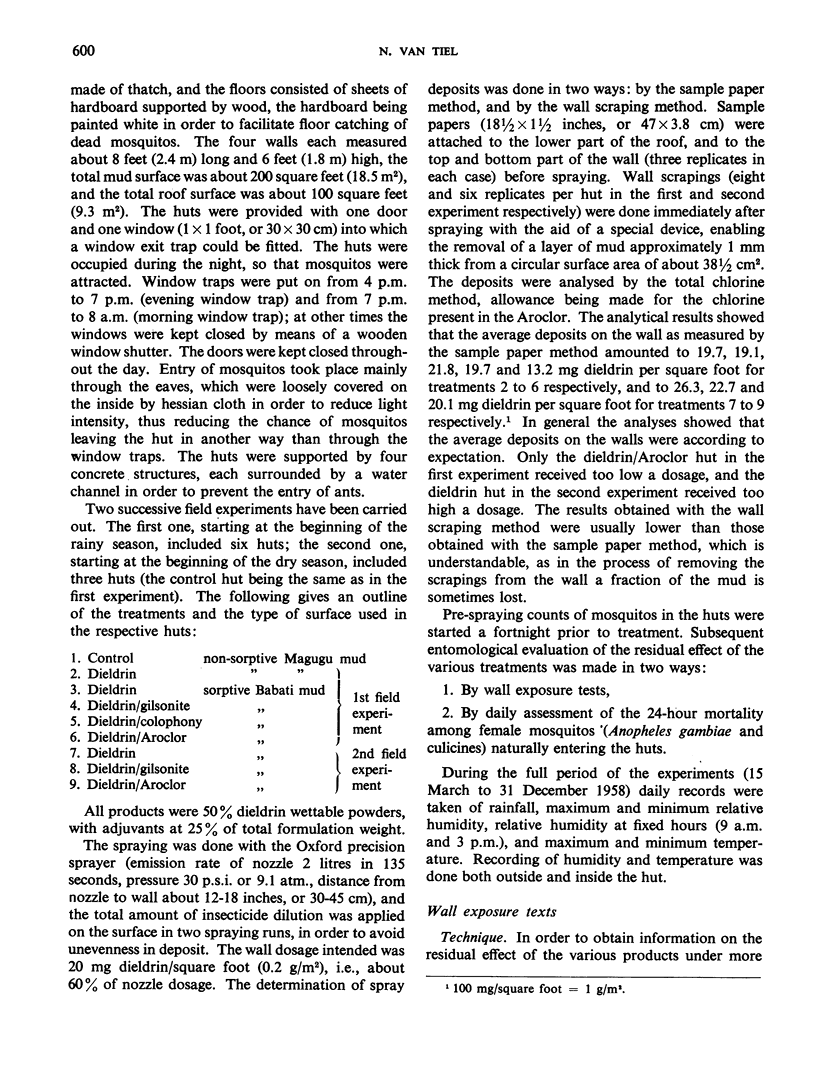
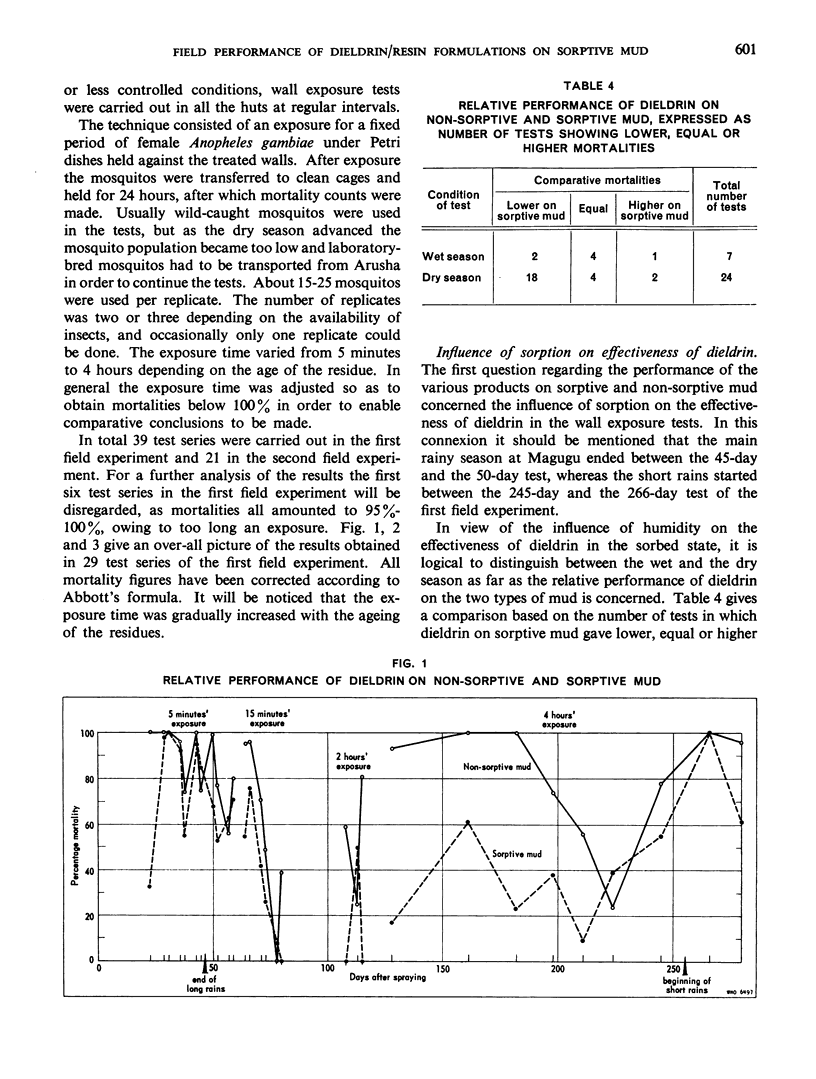
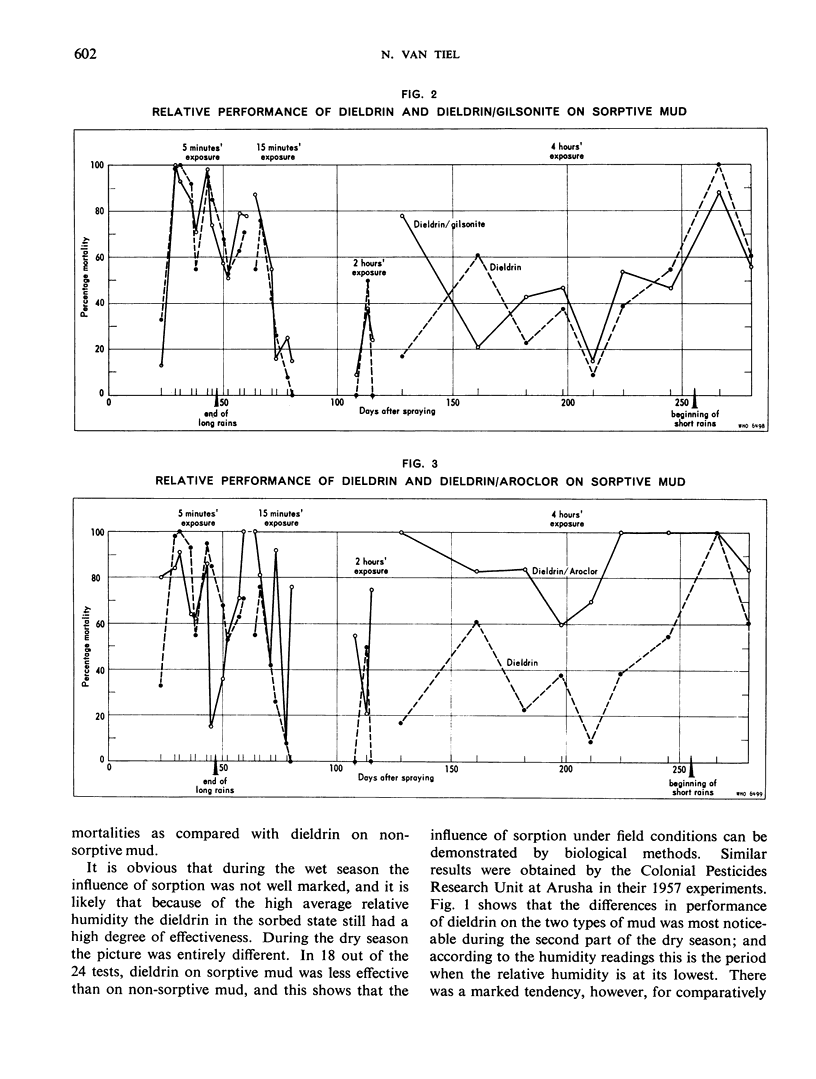
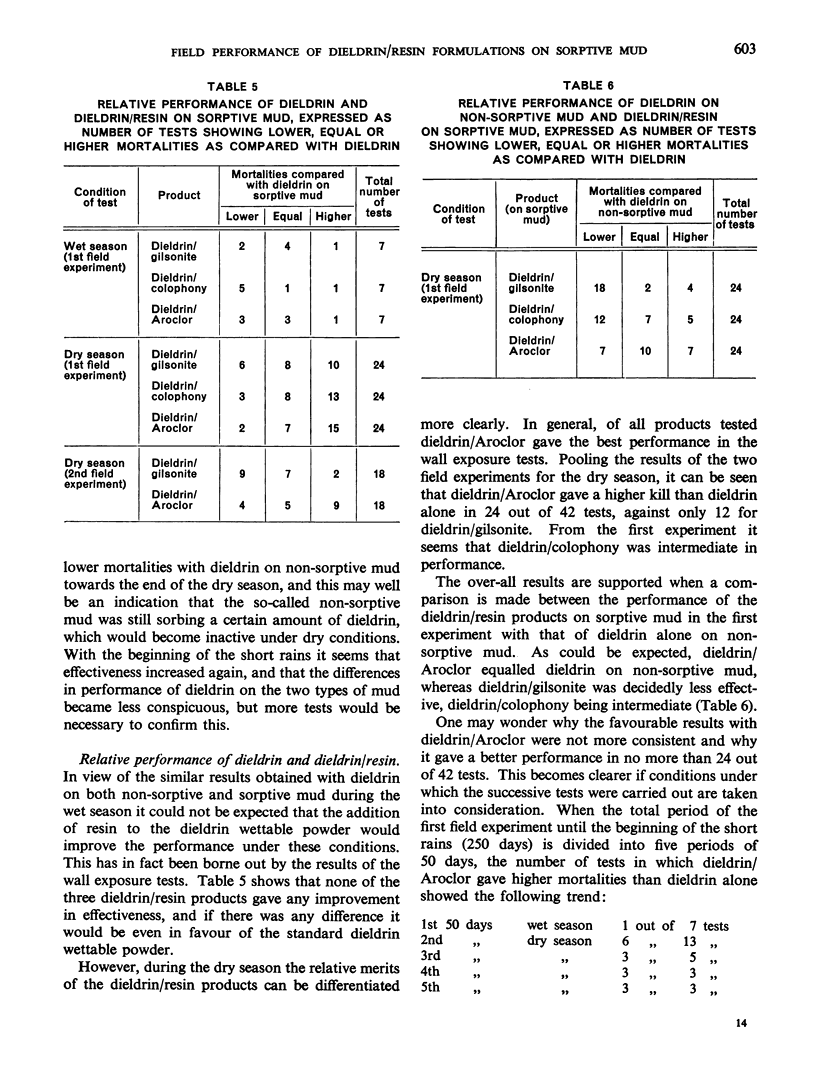
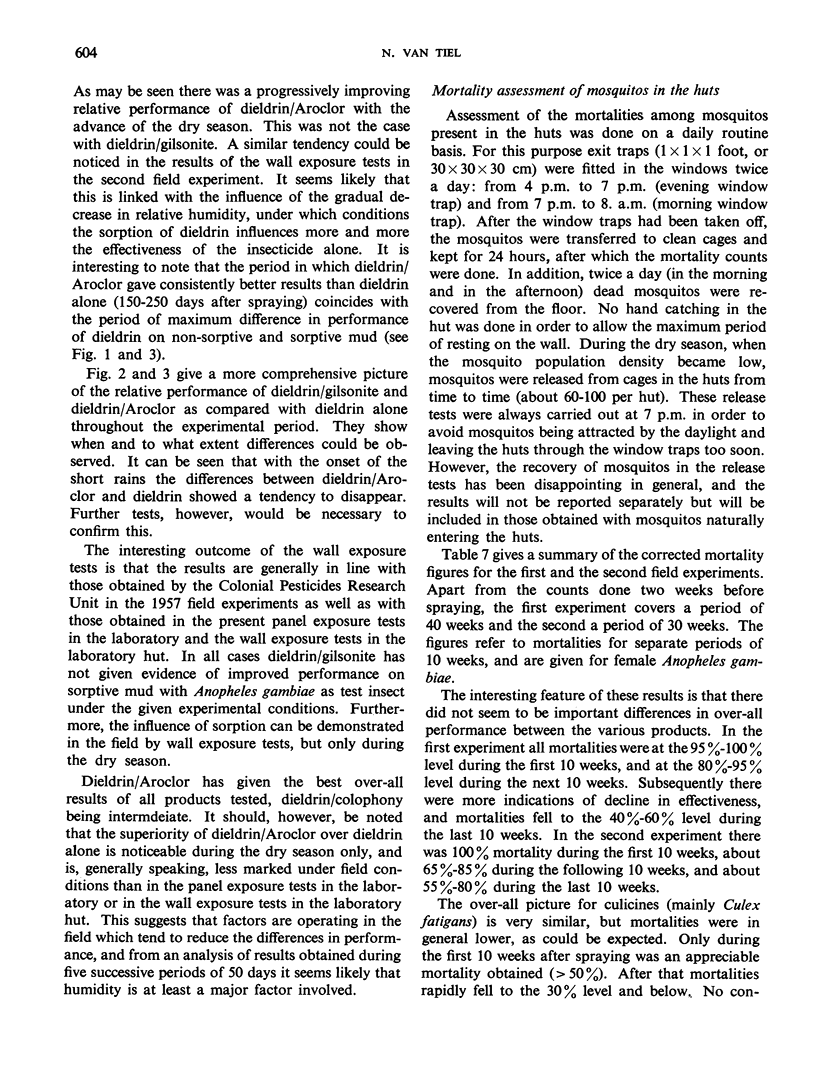
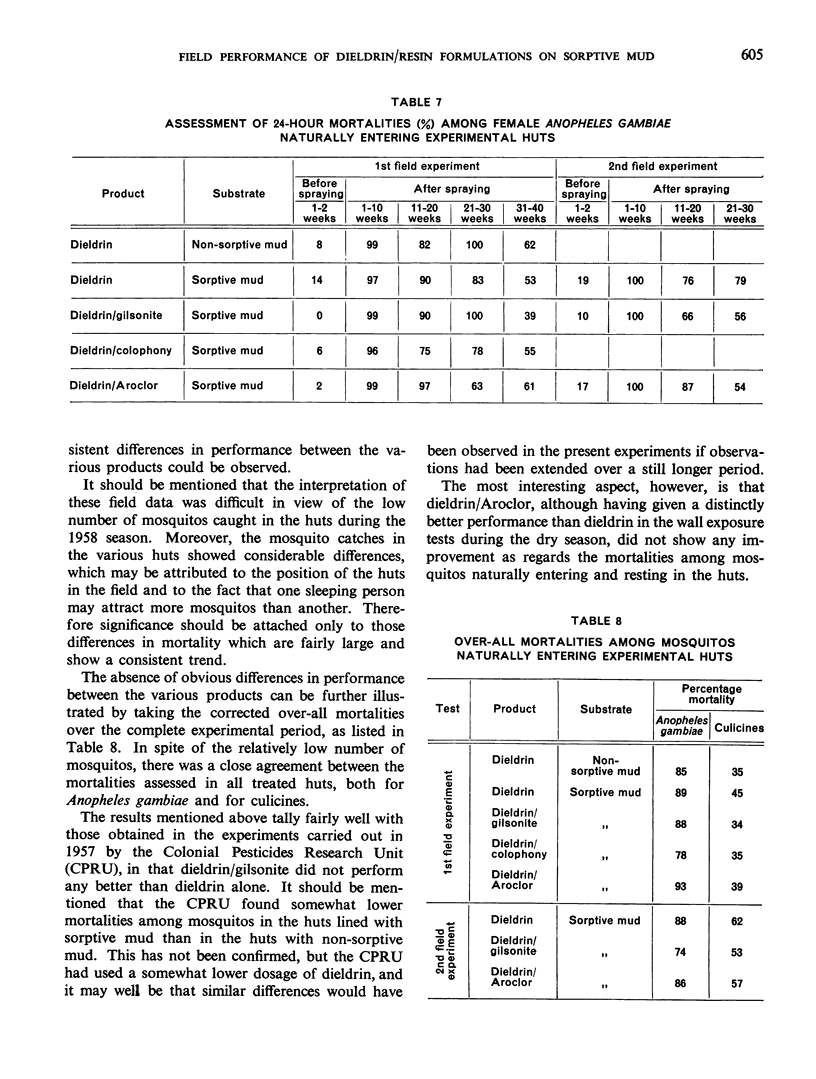
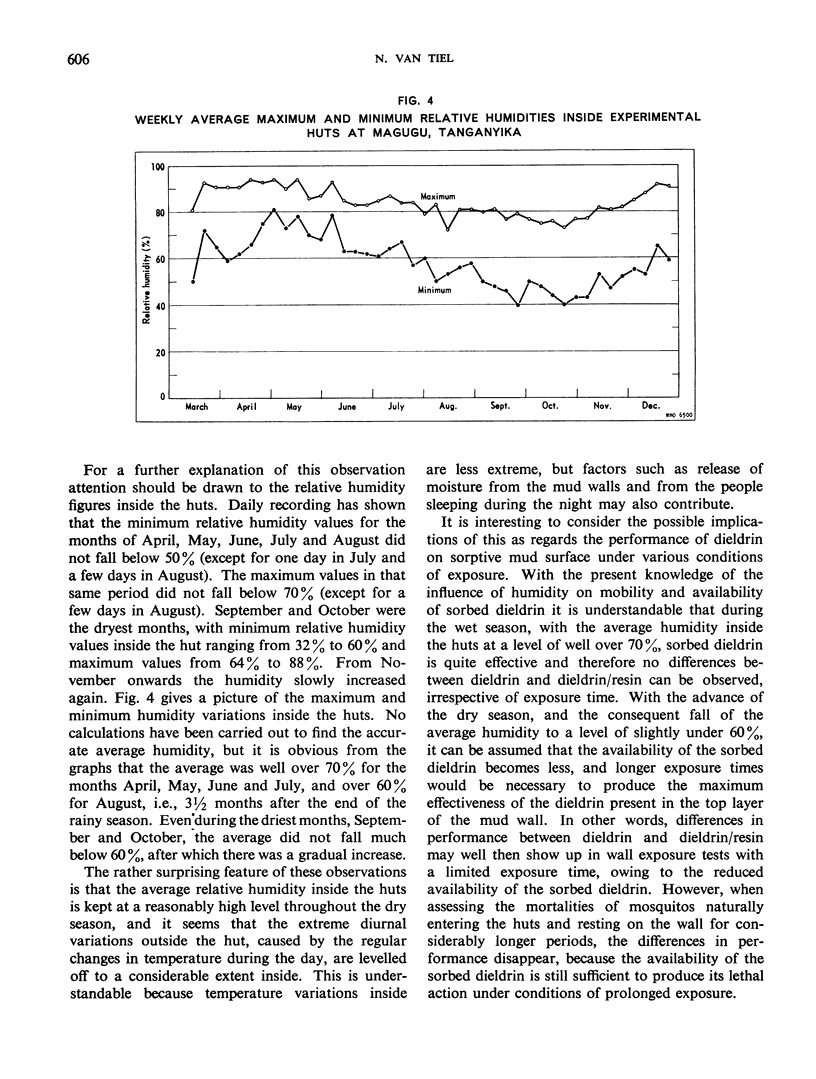

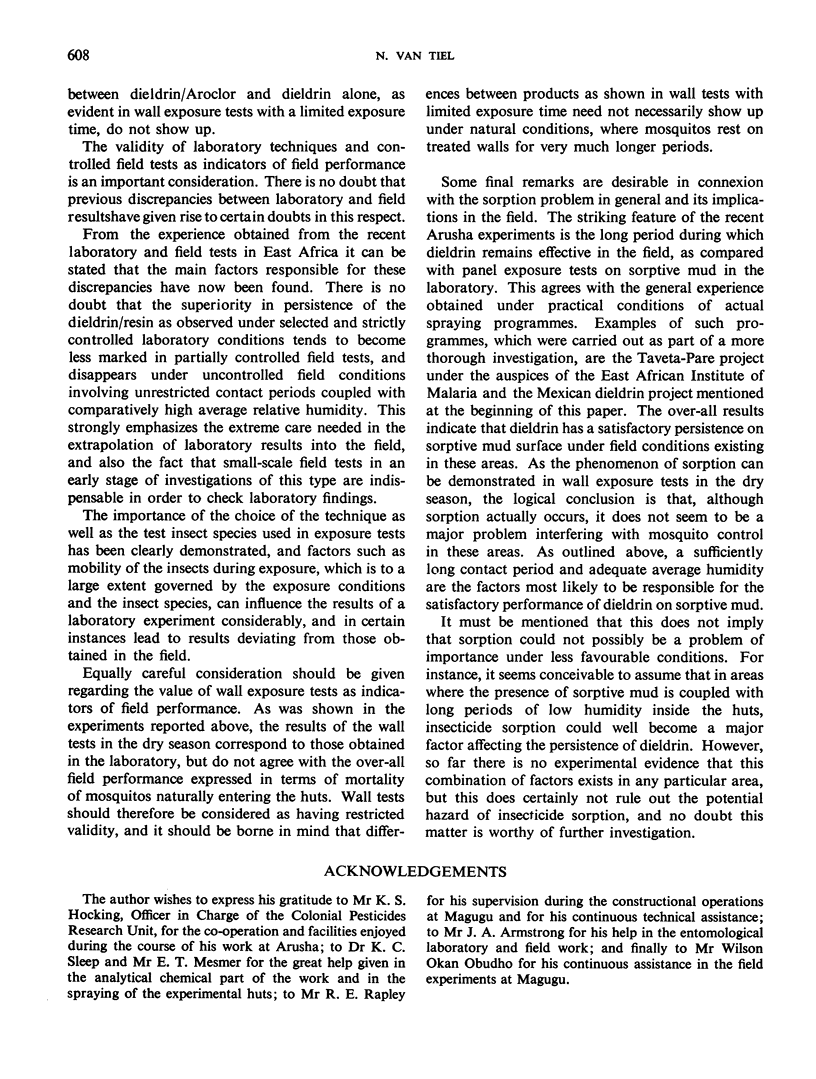
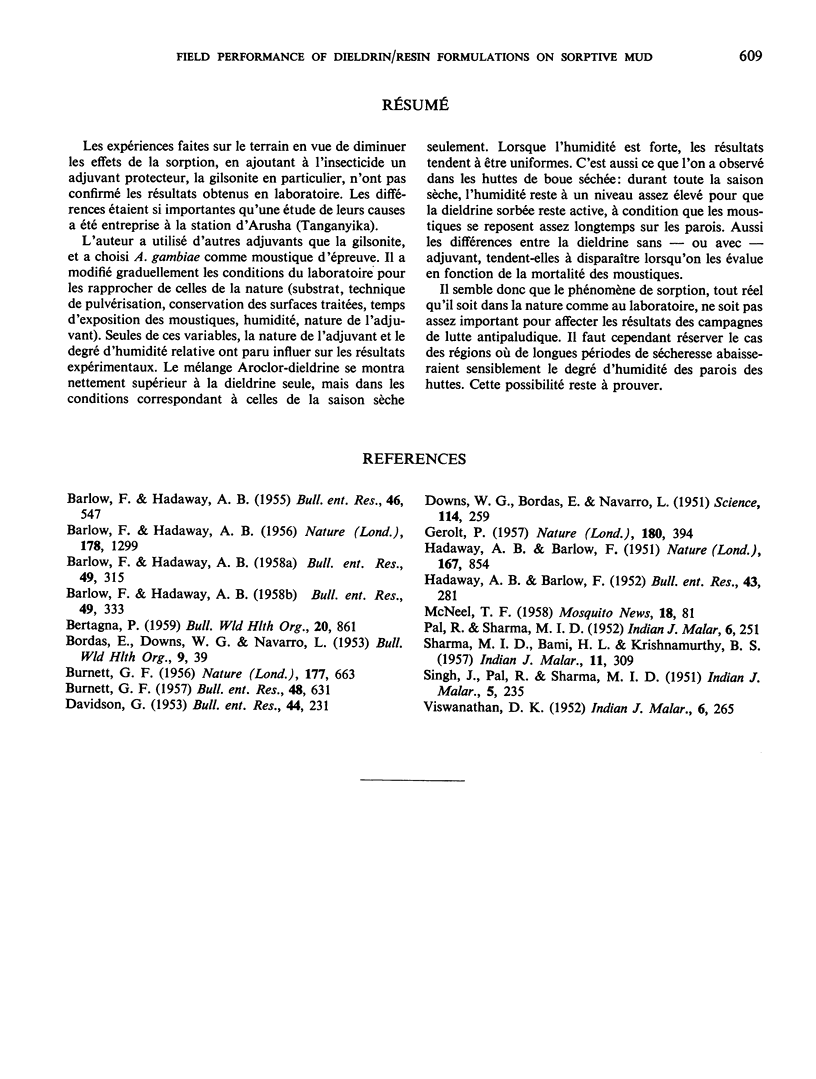
Selected References
These references are in PubMed. This may not be the complete list of references from this article.
- BARLOW F., HADAWAY A. B. Effect of changes in humidity on the toxicity and distribution of insecticides sorbed by some dried soils. Nature. 1956 Dec 8;178(4545):1299–1300. doi: 10.1038/1781299a0. [DOI] [PubMed] [Google Scholar]
- BERTAGNA P. Residual insecticides and the problem of sorption. Bull World Health Organ. 1959;20:861–889. [PMC free article] [PubMed] [Google Scholar]
- BORDAS E., DOWNS W. G., NAVARRO L. Inactivation of DDT deposits on mud surfaces. Bull World Health Organ. 1953;9(1):39–57. [PMC free article] [PubMed] [Google Scholar]
- BURNETT G. F. Variation in mortality with differences in humidity among mosquitoes exposed to BHC, dieldrin and DDT. Nature. 1956 Apr 7;177(4510):663–664. doi: 10.1038/177663c0. [DOI] [PubMed] [Google Scholar]
- DOWNS W. G., BORDAS E., NAVARRO L. Duration of action of residual DDT deposits on adobe surfaces. Science. 1951 Sep 7;114(2958):259–262. doi: 10.1126/science.114.2958.259. [DOI] [PubMed] [Google Scholar]
- HADAWAY A. B., BARLOW F. Sorption of solid insecticides by dried mud. Nature. 1951 May 26;167(4256):854–854. doi: 10.1038/167854a0. [DOI] [PubMed] [Google Scholar]
- SHARMA M. I., BAMI H. L., KRISHNAMURTHY B. S. Studies on the rapid loss of biological efficacy of D. D. T. and dieldrin suspensions on mud surfaces against culicine mosquitoes. Indian J Malariol. 1957 Sep;11(3):309–319. [PubMed] [Google Scholar]
- SINGH J., PAL R., SHARMA M. I. D. Field studies on the comparative effectiveness of D.D.T. and B.H.C. against mosquitoes when applied separately and in combination. Indian J Malariol. 1951 Jun;5(2):235–248. [PubMed] [Google Scholar]


